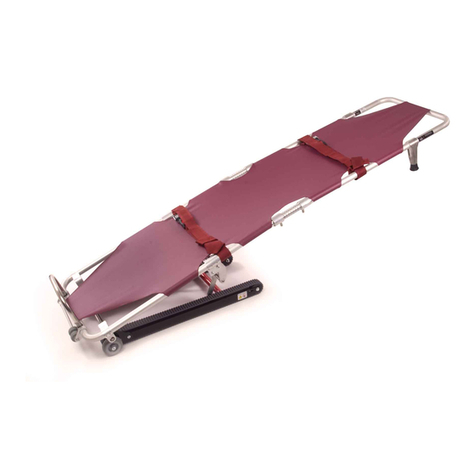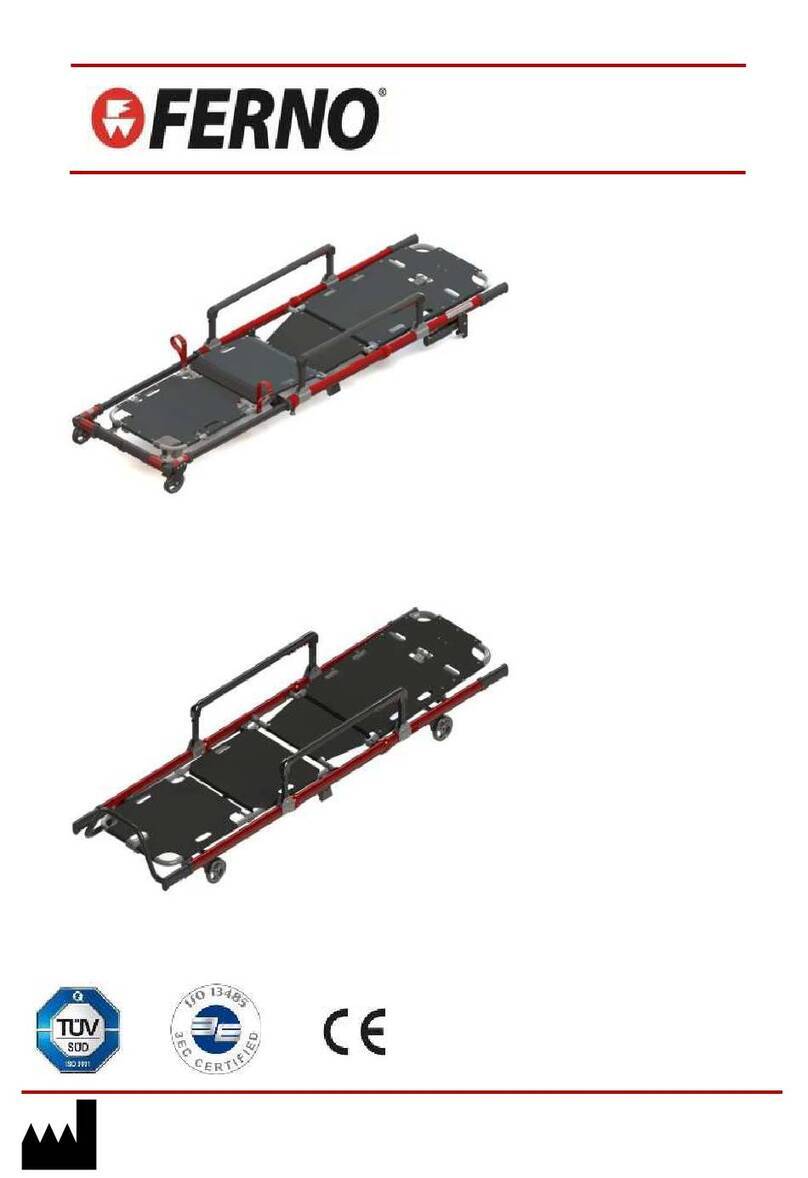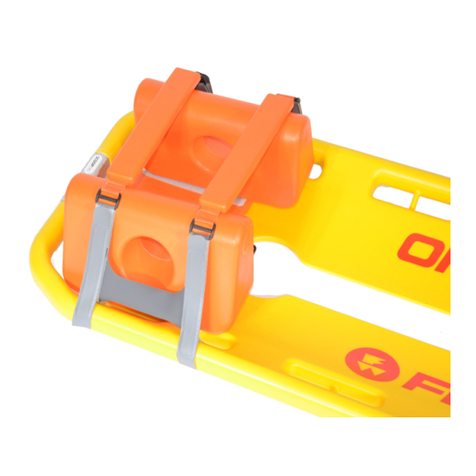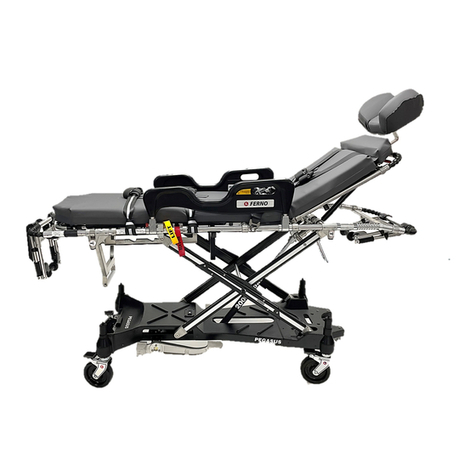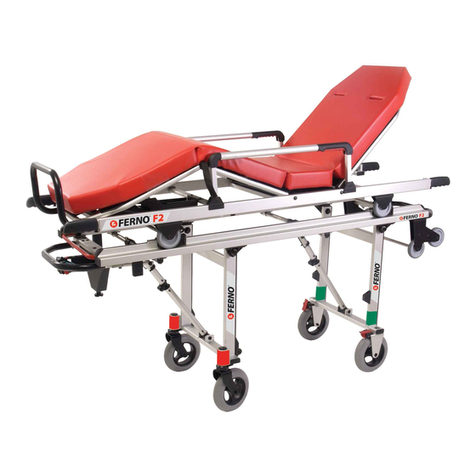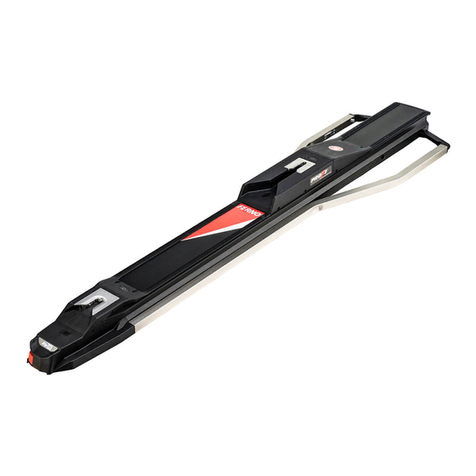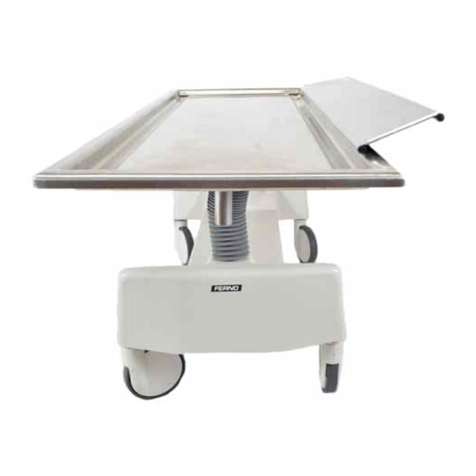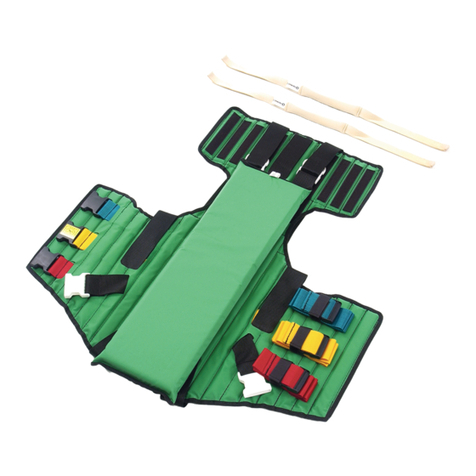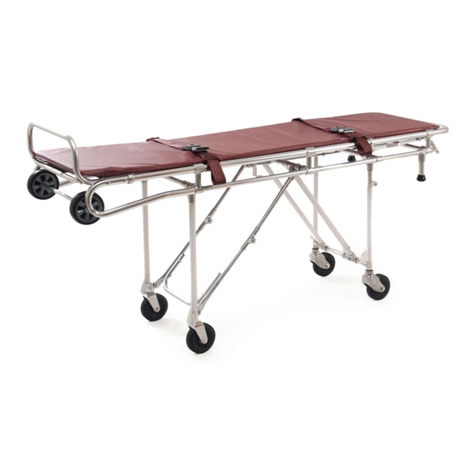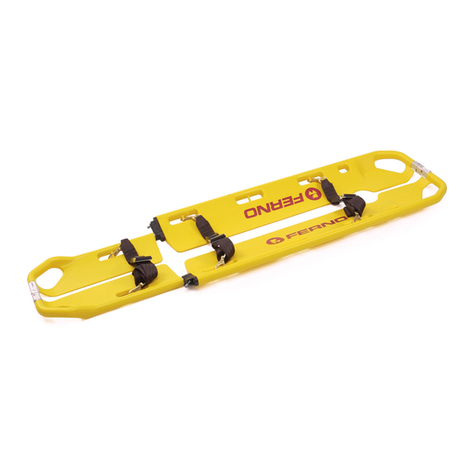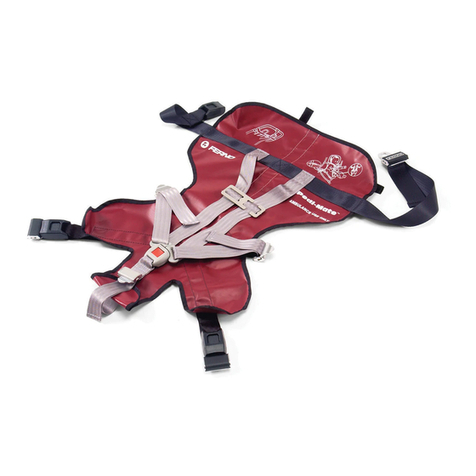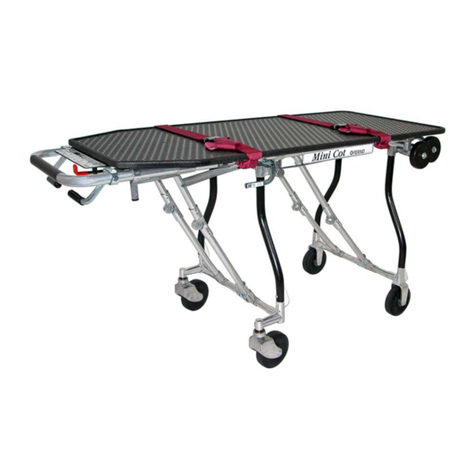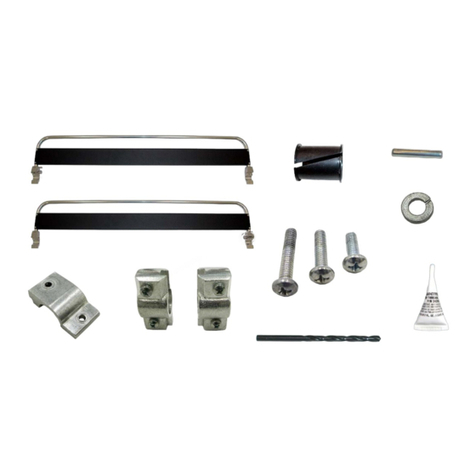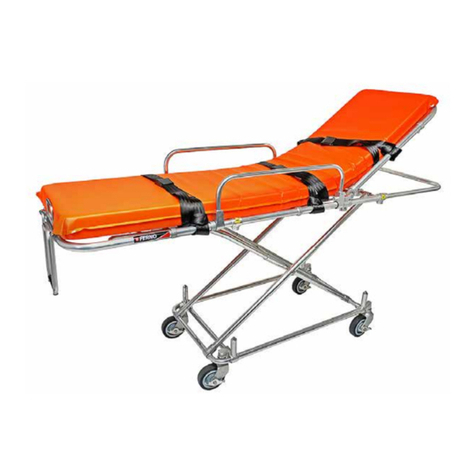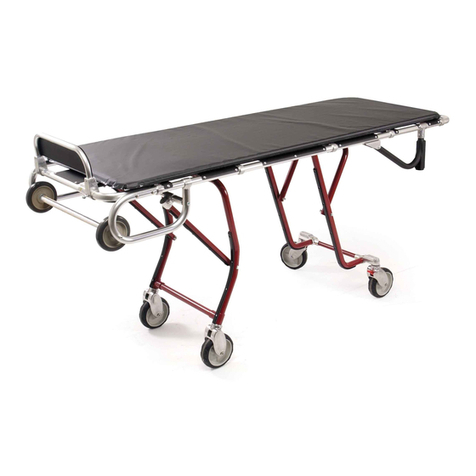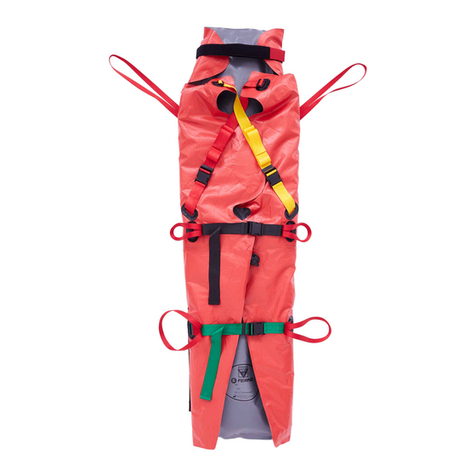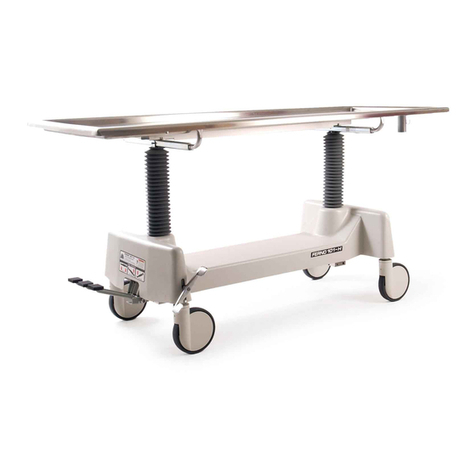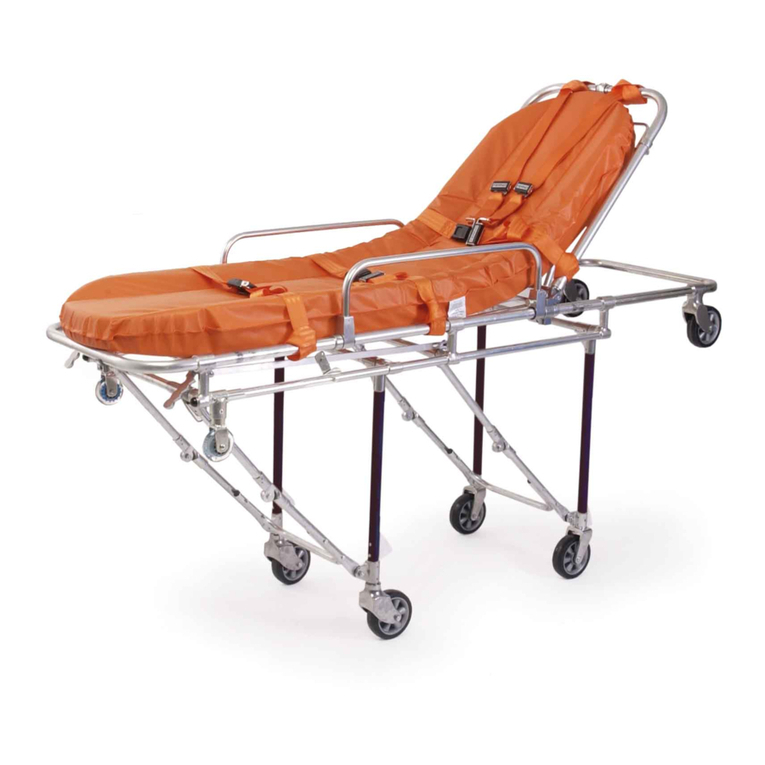
1. Device to be used on or by the order of a physician.
2. Before use, carefully read the manual.
3. Follow all local protocols and care provider standards.
4. Do not use the pulse oximeter in an MRI or CT
environment.
5. Do not use the pulse oximeter in situations where
alarms are required. The device has no alarms.
6. Explosion hazard: Do not use the pulse oximeter in
an explosive atmosphere.
7. The pulse oximeter is intended only as an adjunct in
patient assessment. It must be used in conjunction
with other methods of assessing clinical signs and
symptoms. Unit is designed for temporary checking;
not permanent attachment.
8. Check the pulse oximeter sensor application site
frequently to determine the positioning of the sensor
and circulation and skin sensitivity of the patient.
9. Do not use adhesive tape to apply or secure the unit.
10. The pulse oximeter has no SpO2 alarms; it is not for
continuous monitoring, as indicated by the symbol.
11. Prolonged use or the patient’s condition may require
changing the sensor site periodically.
Change sensor site and check skin integrity,
circulatory status, and correct alignment at least
every 4 hours.
12. Inaccurate measurements may be caused by
autoclaving, ethylene oxide sterilizing, or immersing
the sensors in liquid may cause inaccurate readings.
13. Significant levels of dysfunctional hemoglobin’s
(such as carbonxy-hemoglobin or methemoglobin)
14. Intravascular dyes such as indocyanine green or
methylene blue.
15. SpO2 measurements may be adversely affected in
the presence of high ambient light or direct sunlight.
Shield the sensor area from the light source
(example: shield with a towel).
16. Excessive patient movement.
17. High-frequency electrosurgical and electromagnetic
interference and defibrillators.
18. Venous pulsations
19. Placement of a sensor on an extremity with a blood
pressure cuff, arterial catheter, or intravascular line.
20. The patient has hypotension, severe
vasoconstriction, severe anemia, or hypothermia.
21. The patient is in cardiac arrest or is in shock
22. Fingernail polish or false fingernails may cause
inaccurate SpO2 readings.
Follow local ordinances and recycling instructions
regarding disposal or recycling of the device and
device components, including batteries.
1 Operation of the product is simple and convenient
2 The product is small in volume, light in weight (total
weight is about 50g including batteries) and can be
conveniently carried.
3 Power consumption of the product is low and the two
originally-equipped AAA batteries can be operated
continuously for approximately 30 hours.
4 Low voltage warning will be indicated in the visual
window when battery voltage is so low that normal
operation of the oximeter might be influenced.
5 The product will automatically be powered off when
no signal is detected for longer than 8 seconds.
The finger type Oximeter can be used to measure
human Hemoglobin Saturation and heart rate through a
finger. The product is suitable for use in family, hospital
(including clinical use in internist/ surgery, anesthesia,
pediatrics, intensive care, etc.) With medical direction,
the unit can be used in sports medicine. The unit can
be used before or after sports. Operation in sport
procedure is not recommended, etc. The product is not
suitable to monitor patient continuously during play or
activity.
1 Remove batter cover. Install two AAA batteries into
the battery cassette. Replace cover.
2 Patients finger to be monitored should be clean. Use
medical alcohol to clean the test finger. Medical
alcohol can be used to wipe down the rubber pads
inside the clamp zone. Clean the unit before and
after each use.
3. Nip (squeeze) the clamp as shown in the diagram.
4. Plug one patient finger into the rubber hole of the
Oximeter. It is best to fully engage the finger into the
unit before releasing the clamp.
5 Press the switch button once on front panel.
6 Hold the patient’s finger steady while the unit is taking
its reading. Body movement is not recommended
during operation.
7 Read correspondent data from display screen.
8 There are six (6) display modes.
1. General Description
2. Measurement principle
Diagram of Operation Principle
3. Precautions for use
1. Red and Infrared-ray Emission
2. Red and Infrared-ray Receipt
4. Product Properties
5. Product Operation Scope
6. Operation Instructions
1.
2.
3.
4.
5.
6.
When the patients finger is inserted into the
Oximeter, the fingernail surface must be
facing upward.
Hemoglobin Saturation is a percentage of the amount
of oxygen combined with hemoglobin in proportion to
the amount of oxygen the hemoglobin is capable of
carrying.
It is expressed as a percentage of a ratio:
content/capacity.
In other words, it is the existence of oxygen in the
blood, which is known as Oxyhemoglobin. It is a very
important physiological parameter for Respiratory
circulation system. Many respiratory diseases can
result in hemoglobin saturation being lowered in human
blood. Moreover, the following factors can also lead to
problems in oxygen supply, potentially causing human
hemoglobin saturation to be reduced:
Automatic Organic Regulation Malfunction caused
by Anesthesia, Intensive Postoperative Trauma,
injuries resulting from medical examinations, etc. or in
the situation of illnesses, such as light headedness,
asthenia, vomiting, etc., might happen to the patients
and possibly endanger the patient’s life.
Therefore, it is very important to know the patient’s
hemoglobin saturation. The Finger type Pulse Oxime-
ter features, a large display, low power consumption,
convenient operation all in a compact portable unit. The
patient simply puts one finger into the photoelectric
sensor for diagnosis, and the display screen will
directly show the measured value of hemoglobin
Saturation.
Principle of the Oximeter is as follows: An experience
formula of data process is established taking use of
Lambert Beer Law according to Spectrum Absorption
Characteristics of Reductive hemoglobin (R Hb) and
Oxyhemoglobin (O2 Hb) in glow and near-infrared
zones. The operation principle of the instrument is
Photoelectric Oxyhemoglobin inspection technology is
adopted in accordance with Capacity Pulse Scanning
and Recording Technology, so that two beams of
different wavelength of lights (660nm glow and 940nm
near infrared light) can be focused onto a human nail
tip through perspective clamp finger-type sensor.
The measured signal is obtained by a photosensitive
element. The information acquired will be shown on
two groups of LEDs through a process in the
electronic circuits and microprocessor.
After turn on the oximeter, each time you
press the power switch, the oximeter will
switch to another display mode, there are 6
display modes shown as follows:
When you press the power switch for a long
time (more than on second), the brightness
of the oximeter will be changed by degrees,
there are 10 levels on brightness; the default
level is level four.
Declaration: Please use the medical alcohol to
clean the rubber touching the finger inside of
Oximeter, and clean the test finger using alcohol
before an after each test. (The rubber inside os
the Oximeter belongs medical rubber, which has
no toxin, and no harmful to the skin of human
being).
7. Brief Description of Front Panel
The heart rate bar graph display corresponds with
pulse rate.
Instruction Manual
Finger type
Pulse Oximeter
No.
T10565
Low power indicator
SpO
2%
PRbpm
98 77
SPO2 waveform
SpO
2%
PR
bpm
98
77
PR Bar graph
SPO2
PR
Power
Switch
FERNO2
FERNO2
FERNO2
FERNO2
FERNO2
FERNO2
FERNO2
FERNO2
